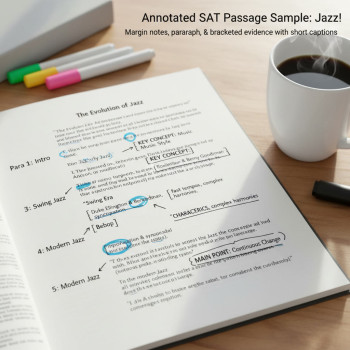Introduction — Why the SAT still matters for some applicants to Seoul National University
Planning to apply to Seoul National University (SNU)? First — congratulations. That aspirational goal opens a world of opportunity. If you’re an international applicant or a student from an education system outside Korea, the SAT (now delivered digitally) is often part of the admissions landscape you’ll need to navigate. This blog is written for students and parents who want a warm, practical, up-to-date roadmap for using the Digital SAT successfully in an SNU application.

How admissions at SNU typically view standardized tests
Seoul National University evaluates students holistically, especially for undergraduate admissions. For domestic applicants, Korea’s own national exams and school records play the primary role. But for international applicants — and in several international-track programs — standardized test scores like the SAT or ACT are commonly used as one measurable component among many.
Important to remember: universities revise application policies periodically. Rather than treating the SAT as an absolute must-or-nothing requirement, think of it as a strong signal of readiness that complements transcripts, essays, recommendation letters, and extracurricular achievements.
Practical takeaway
- If you’re applying from outside Korea, prepare to submit the Digital SAT unless the program specifically lists alternatives.
- If a program is test-optional, a strong SAT can still significantly strengthen your application.
- Use the SAT strategically: reinforce areas where your school system’s record may not fully reflect your academic ability.
What parts of the Digital SAT matter most for SNU applications
The Digital SAT keeps the same core purpose: measure critical reading, mathematical reasoning, and evidence-based problem-solving. Admissions officers look for:
- Strong overall score — a simple signal of academic preparedness.
- Section balance — especially if you’re applying to engineering or quantitative majors where Math strength matters.
- Consistent testing history — a single exceptional score is great, but steady improvement also tells a story of growth.
Score targets and context
When thinking about target scores, consider this realistic, strategic framework:
| Applicant Type | Realistic SAT Target Range (out of 1600) | Why this range? |
|---|---|---|
| Highly competitive (STEM / Engineering hopefuls) | 1500–1570 | Signals top quantitative readiness and academic rigor. |
| Strong humanities/social sciences applicants | 1440–1520 | Demonstrates strong reading, writing, and reasoning ability. |
| Well-rounded applicants (balanced profile) | 1380–1480 | Competitive when combined with strong essays and activities. |
| Applicants with exceptional non-test strengths | 1300–1400+ | Test score less critical if you have awards, research, or artistic portfolios. |
Those ranges are intended as strategic targets — not absolute cutoffs. Admissions decisions consider many dimensions beyond any single test score.
How to plan your SAT timeline for SNU
Timing and preparation rhythm are often the unsung heroes of successful applications. Here’s a simple timeline you can adapt to your application cycle.
Suggested timeline (example for students applying in the fall)
- Junior year spring / summer — begin content review and diagnostic Digital SAT: learn the format, take one adaptive practice test, and identify weak areas.
- Junior year summer — intensive study block (targeted practice on weaknesses). Consider 1–1 tutoring or an individualized program for focused gains.
- Senior year fall — take your first official Digital SAT early in the season. Use the result to refine your final prep.
- Senior year fall (if needed) — retake the SAT once or twice before application deadlines to maximize scores.
Scheduling tips
- Plan to have your preferred SAT score in hand several weeks before SNU’s application deadline to allow time for score reporting and any adjustments.
- If you’re balancing national exams, contests, or school obligations, schedule the SAT when you can sustain focused practice without burnout.
Study strategies that actually move the needle
High-quality practice is the difference between slow, frustrating progress and confident, measurable improvement. Below are evidence-based strategies students often overlook.
1) Quality over quantity
Two hours of deliberate practice that targets your weakest question types (with analysis and correction) beats six hours of unfocused drilling. Keep a short error log and revisit it weekly.
2) Mix content review with timed, adaptive practice
The Digital SAT’s adaptive format rewards steady accuracy. Alternate between untimed skill-building and timed section practice so you develop speed without sacrificing precision.
3) Use real, scored practice tests
Treat at least one practice test per month as a simulation: same start time, same breaks, same rules. Scoring under test conditions helps reduce surprises on test day.
4) Build reading stamina and math fluency
- For the Reading/Writing part: read high-quality non-fiction, practice summarizing arguments, and do passage-mapping drills.
- For Math: focus on algebra, problem setup, and data interpretation — these are heavily tested and often a deciding factor for STEM applicants.
5) Leverage personalized help when it matters
Many high-performing applicants use focused one-on-one tutoring to shave off core weaknesses and develop test strategy. Personalized tutoring — for example, Sparkl’s 1-on-1 guidance with tailored study plans and AI-driven insights — can accelerate improvement by tailoring practice to your unique error patterns and timing.
Crafting the rest of your SNU application: Where the SAT fits in
Think of the SAT as one strong brushstroke in a larger portrait. SNU admissions teams look for academic excellence, intellectual curiosity, and potential for contribution to campus life. Use the SAT to complement, not replace, other parts of your application.
Essays and personal statements
Essays are where your voice matters. A high SAT score can get attention; a well-crafted essay helps them remember you. Connect your intellectual interests and experiences to how SNU’s environment will help you grow.
Letters of recommendation
Ask teachers who know your academic work well and can speak to your persistence and potential. If you used the SAT to show readiness in a subject, make sure recommenders reinforce that narrative with examples.
Extracurriculars, research, and portfolios
If your SAT is average for an elite applicant but you have research, national awards, or a standout portfolio, your application can still be very competitive. Show impact and leadership — depth beats breadth.
Common FAQs — answered plainly
Do I need to submit the SAT to apply to SNU?
Policies can differ by program and from year to year. Many international-track programs accept SAT or ACT scores; others may list alternative pathways. If a program lists standardized test scores as optional, a strong Digital SAT remains a useful asset. Check program-specific guidelines early — and plan to take the SAT unless you’re certain it isn’t required.
What if my first SAT score is lower than expected?
Retake. Most applicants improve with targeted practice. Use score reports to identify exact content weaknesses, then focus your study plan. A carefully timed retake, especially after targeted tutoring, often yields meaningful gains.
How should non-native English speakers prepare for the Reading/Writing section?
Focus on active reading strategies (outlining passages, identifying thesis/structure), vocabulary in context, and paraphrasing practice. Regular practice with high-quality English texts — plus targeted grammar review — will help. If language is a concern, integrate English immersion into your daily routine: podcasts, essays, and discussion groups all help.
Sample week-by-week 8-week SAT sprint plan
This compact plan is for students who need to make fast, focused improvements before a test date.
| Week | Focus | Daily Commitment |
|---|---|---|
| 1 | Diagnostic test + error log setup | 1.5–2 hours (test + review) |
| 2 | Math foundations: algebra & data | 1–2 hours (targeted practice) |
| 3 | Reading: passage structure & timing | 1–2 hours (passage drills) |
| 4 | Advanced math topics & mixed problem sets | 1.5–2 hours |
| 5 | Full practice test under timed conditions | 3 hours (test + deep review) |
| 6 | Target weak areas identified from week 5 | 1.5–2 hours |
| 7 | Test strategy, pacing, and question triage | 1–2 hours |
| 8 | Final review, light practice, rest | 30–60 minutes daily |
Practical tips for test day and score reporting
- Know the Digital SAT format on your testing device and practice with the same environment.
- Make sure you understand score-reporting deadlines and how to send scores to SNU programs — plan your test date so scores reach the admissions office before any deadlines.
- Pack essentials the night before: acceptable ID, backup batteries or device charger if permitted, snacks for after the test, and a calm mindset.
Remember: the story matters
A strong application isn’t solely a collection of numbers. Admissions teams want to see intellectual curiosity, resilience, and authentic motivation. Treat the SAT as an opportunity to show one dimension of your academic readiness — and use essays, recommendations, and activities to tell the rest of your story.

How personalized tutoring can help — and what to look for
If you decide to work with a tutor, prioritize options that give you:
- 1-on-1 attention and flexible pacing tailored to your strengths and weaknesses.
- Data-driven insight into your error patterns (not just generic drills).
- Clear milestones and practice that simulate the Digital SAT’s adaptive timing and interface.
Sparkl’s personalized tutoring model is a natural fit if you want targeted improvement: their 1-on-1 guidance, tailored study plans, and AI-driven insights can compress months of unfocused study into a focused, efficient plan. When paired with deliberate practice, that kind of support often produces measurable score gains and greater confidence on test day.
Putting it all together — a wrap-up checklist
- Confirm whether your SNU program expects, recommends, or accepts the Digital SAT.
- Set a realistic score target based on your intended major and profile.
- Create a study timeline that leaves room for at least one retake.
- Combine focused self-study with occasional diagnostic tests and targeted tutoring as needed.
- Craft essays and application materials that complement your test scores and highlight your unique story.
Final encouragement
Applying to Seoul National University is a big, inspiring step. The Digital SAT is a part of that journey — an important one, but not the whole. You don’t need perfection; you need a thoughtful plan, disciplined practice, and a clear narrative about who you are and what you’ll contribute. With steady preparation, strategic support, and a calm approach on test day, you can present an application that truly reflects your potential.
If you want help creating a personalized SAT study plan or want to explore 1-on-1 tutoring that adapts to your learning profile, consider starting with a short diagnostic and a clear set of milestones — small actions that lead to big results.
Good luck — and remember: your application is your story. Make it honest, make it strong, and let it show the best version of you.

















No Comments
Leave a comment Cancel